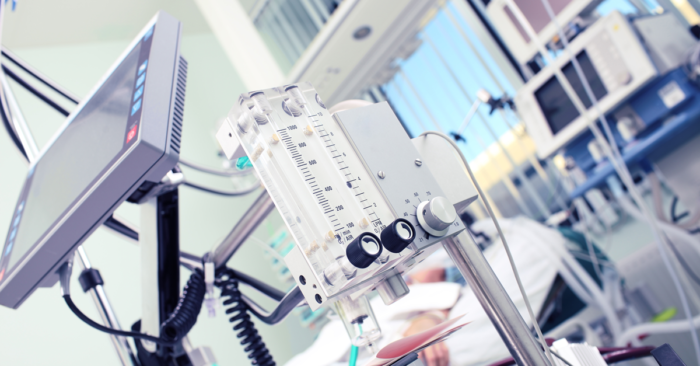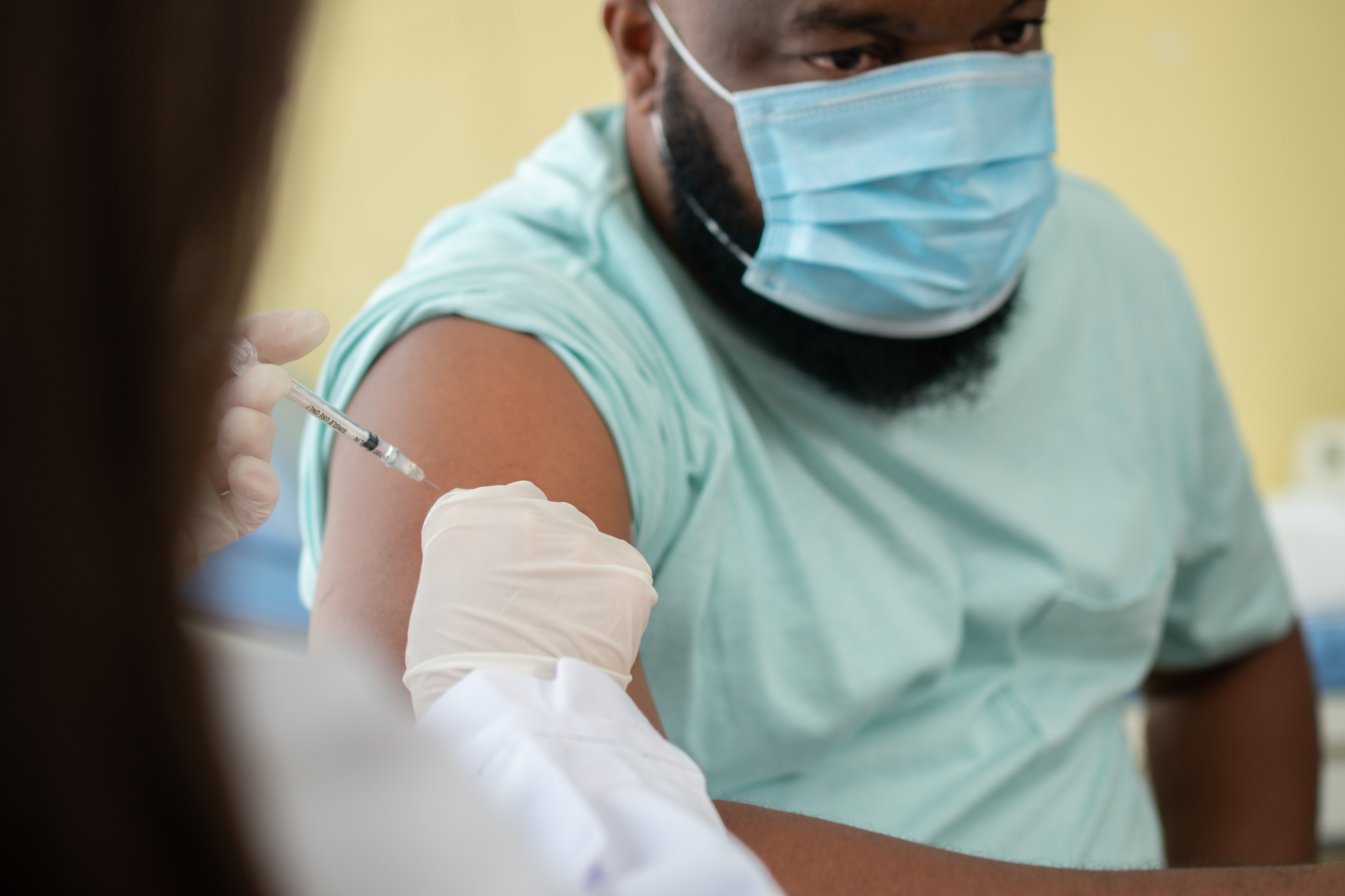Asian Americans and Pacific Islander Americans on the Frontlines
Date: May 21, 2020

In honor of the Asian American and Pacific Islanders (AAPI) Heritage Month, we examine the critical role that Asian Americans and Pacific Islander Americans have in supporting healthcare and other essential industries in the United States during the Covid-19 crisis. Today, 28.2 percent of immigrants in the United States are AAPI and in 2018, 6.8 percent of the total U.S. population identified as Asian American or Pacific Islander. Both these numbers have been growing rapidly over the last decade. To shed more light on this increasingly important segment of the American people, this post will focus on the work done by the AAPI population on the frontlines in the essential healthcare, food, education, and biomedical industries.
AAPI Workers in Healthcare
As the healthcare system across the United States is facing increased pressure due to the coronavirus outbreak, Asian Americans and Pacific Islanders are on the frontlines of the critical response to the pandemic, keeping hospitals running and Americans healthy. These AAPI workers make up a large portion of the essential workers on the frontlines, with 1.4 million AAPI healthcare workers making up 8.5 percent of all essential healthcare workers. AAPI immigrants make up the vast majority of these workers – almost a million essential frontline healthcare workers are immigrants.
Given their share of the overall U.S. population, this means that the AAPI population is overrepresented in the field, with 8.5 percent of healthcare workers being AAPI, compared to 6.8 percent of the U.S. population. The same is true for AAPI immigrants, with 5.9 percent in the industry compared to 3.8 percent at large.
In certain states, the AAPI population is even more important to the healthcare system. AAPI workers make up the highest share of the healthcare workforce in Hawaii (71.6 percent), California (26.3 percent), and Nevada (19.0 percent). In Hawaii, California, Nevada, and New Jersey, AAPI immigrants represent over 10 percent of the workforce.
Table 1: Asian Americans and Pacific Islander Americans in Healthcare
| State | Number of AAPI Workers | AAPI Share of all Healthcare Workers |
| Hawaii | 44,820 | 71.6% |
| California | 444,155 | 26.3% |
| Nevada | 19,806 | 19.0% |
| Washington | 47,594 | 13.6% |
| New Jersey | 64,672 | 13.3% |
| New York | 134,824 | 11.6% |
| Illinois | 70,144 | 10.5% |
| Maryland | 29,487 | 8.9% |
| Texas | 108,330 | 8.4% |
| Alaska | 2,929 | 8.2% |
Looking at key occupations on the frontline of the crisis, AAPI workers are even more prominent. More than 1 in 5 (or 195,000) physicians and surgeons are AAPI, and 1 in 7 (or 132,000) are specifically AAPI immigrants. Among nurses, there were 348,000 AAPI (1 in 11) nurses, including 260,000 immigrant AAPI nurses.
AAPI Workers and the American Food Supply Chain
While the U.S. food supply chain is under enormous pressure during the pandemic crisis, over 1.2 million AAPI workers are working in food-related industries nationwide, helping to secure the U.S. food supply chain at farms, food processing factories, grocery stores, and restaurants. More than two-thirds (almost 835,000) of these AAPI food industry workers are immigrants. In the food service industry specifically, roughly 790,000 workers (or 1 in 12) are AAPI, and close to 528,000 (or 1 in 18) are AAPI immigrants.
Table 2: AAPI Workers in the U.S. Food Supply Chain, by Nativity
| Industry Sector | Number of AAPI Workers | AAPI Share of Workers | Number of Immigrant AAPI Workers | Immigrant AAPI Share of Workers |
| Agriculture | 34,568 | 1.8% | 22,293 | 1.1% |
| Food Manufacturing | 114,919 | 6.8% | 91,708 | 5.4% |
| Food Wholesale | 51,634 | 5.9% | 35,390 | 4.0% |
| Food Retail | 223,687 | 6.9% | 157,630 | 4.9% |
| Restaurants and Food Service | 789,602 | 8.2% | 527,865 | 5.5% |
AAPI Workers in the Education Sector
There are nearly 942,000 AAPI childcare workers and teachers, making up 1 in 17 workers in the education sector, helping students transition to remote learning. Again, more than half of these workers, or 585,000, are AAPI immigrants. AAPI workers in the education are especially concentrated in higher education, with nearly half (470,000) of all AAPI education workers working at colleges or universities. Among employees in higher education, they make up 1 in 9 of all workers. Meanwhile, another 322,000 AAPI workers work in K-12 education.
Table 3: AAPI Workers in the Education Sector
| Education Sector | Number of AAPI Workers | AAPI Share of Workers | Number of Immigrant AAPI Workers | Immigrant AAPI Share of Workers |
| Child Day Care Services | 71,138 | 4.6% | 46,223 | 3.0% |
| K-12 Education | 322,334 | 3.6% | 174,605 | 2.0% |
| Colleges and Universities | 470,155 | 11.1% | 322,391 | 7.6% |
| Other Schools and Education Support Services | 78,191 | 9.0% | 42,213 | 4.9% |
AAPI Workers in the Biomedical Field
As the country races to find a vaccine for the new coronavirus, hundreds of thousands of AAPI workers, U.S.- and foreign-born are part of the essential workforce that develop medicines and make the supplies that healthcare practitioners and patients need. In the biomedical field, AAPI workers make up nearly 1 in 6 workers (or 83,000) in the pharmaceutical and medical manufacturing industry, 1 in 7 (or 85,000) in the medical equipment and supplies manufacturing industry, and 1 in 9 (or 100,000) in pharmacies and drug stores.
Table 4: AAPI Workers in the Biomedical Field
| Biomedical Sector | Number of AAPI Workers | AAPI Share of Workers | Number of Immigrant AAPI Workers | Immigrant AAPI Share of Workers |
| Pharmaceutical and Medical Manufacturing | 83,421 | 16.2% | 64,283 | 12.5% |
| Medical Equipment and Supplies Manufacturing | 84,536 | 14.2% | 66,004 | 11.1% |
| Pharmacies and Drug Stores | 99,642 | 10.8% | 61,406 | 6.6% |
As the country is doing its best to find vaccines and treatments, keep Americans healthy, keep a disrupted food industry running, and fully rethink the way education is going to happen—Asian Americans and Pacific Islander Americans are there on the frontlines. As a significant part of the population working hard to contain the pandemic and sustain our economy, AAPI Americans are and continue to be a vital part of the United States.
This is part of a series of research briefs looking at immigration in the United States during the time of Covid-19 to learn more, check out our research portal on Immigration and Covid-19. If you have any specific questions about our data, please reach out to us at info@newamericaneconomy.org.
This post is part of our 2020 Asian American and Pacific Islander Heritage Month series. See updated links below for posts from our 2021 series:






